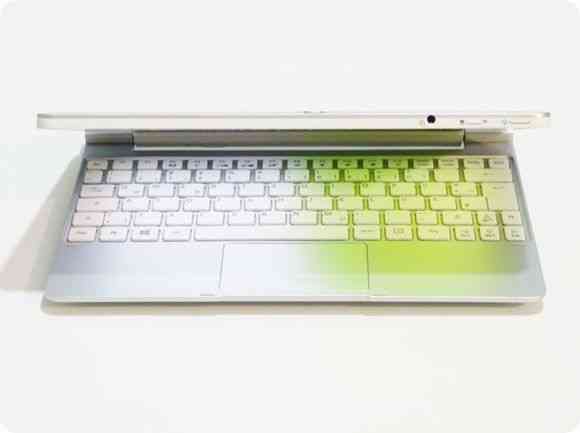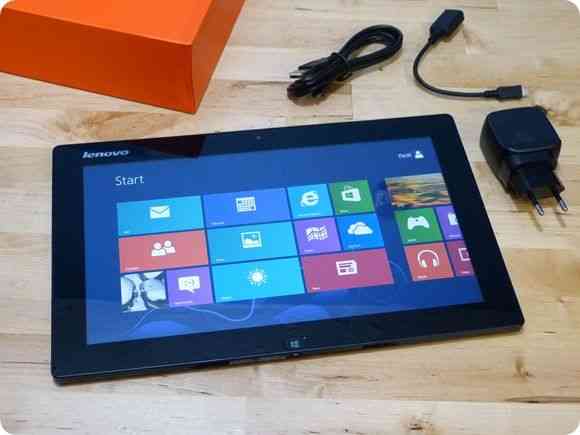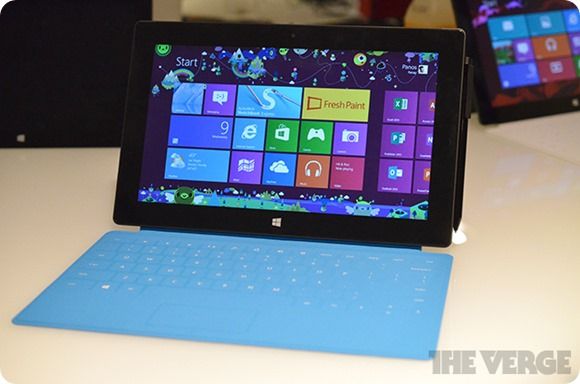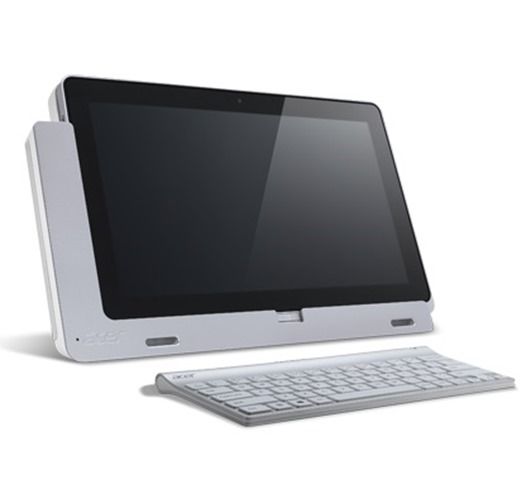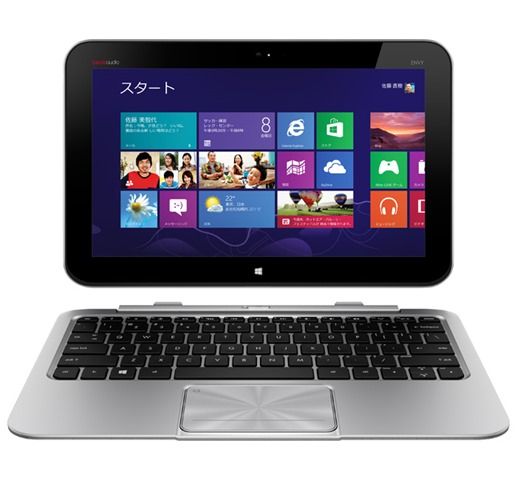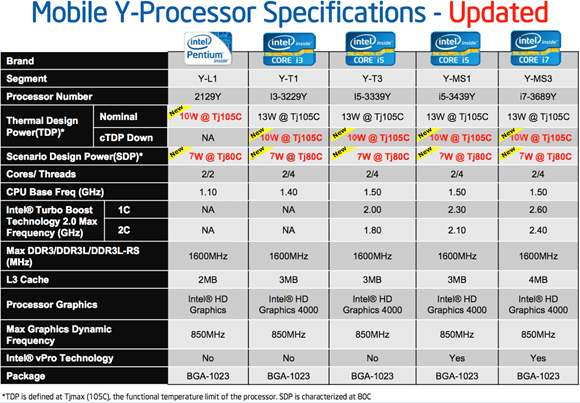The Acer Iconia Tab has been here for over a month now. Bought as a Clovertrail test device it has turned into a surprisingly usable and flexible ultra-mobile PC. The Acer W510 might be using the same Atom core as netbooks did but the package here is far more than that both in terms of computing and usage flexibility. Read on for the full review of the Acer Iconia W510 and a summary of where this ground-breaking style of smart and ultra mobile PC fits into the market.
Read the full storyTag Archive | "Tablet"
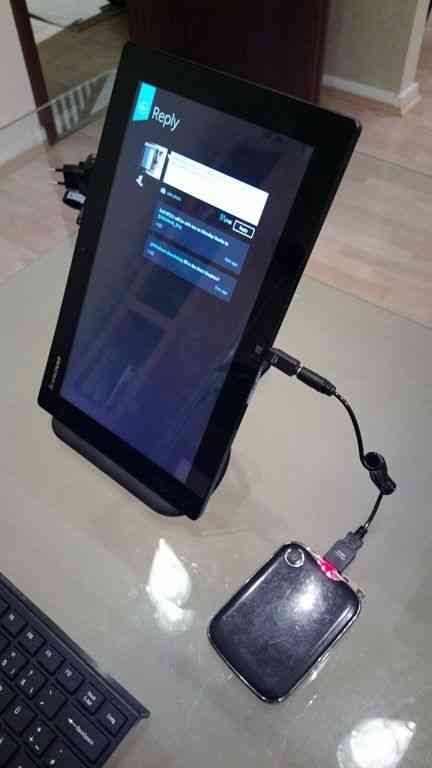
Lenovo Ideatab Lynx Early Review (Tablet Only)
Posted on 19 January 2013
I’ve never been a big fan of tablet PCs. A ultra mobile PC with 5-7 inch screen, yes but the classic tablet pc with digitizer and 11.6 or greater screen size was too awkward for me, Too heavy to hold in one hand, with poor battery life and screen input limited to a pen with a focus on handwriting, was far from my idea of fun or productivity. The Lenovo Ideatab Lynx, an 11.6 inch tablet PC is a completely different story however and is easily the best 11.6 inch tablet PC I’ve used, and that includes the original Samsung XE700, a well-crafted tablet PC with Core CPU and a digitizer. The Lenovo Ideatab runs Windows on an Intel Atom platform.
Now I’m not saying that the Lenovo Ideatab Lynx is the best 11.6 inch tablet and I know there’s a huge difference between this and a pro-level Core-based tablet with Digitizer and handwriting input. I must also say that I haven’t fully tested any of the new Core-based Win 8 tablets yet but the Lynx is working well for me and I feel it hits a very nice sweet-spot in the market. Weight, size, price, features, touch, OS. The Lynx is well-balanced and while it’s not going to be a winning consumer tablet, I bet it finds a lot of friends. The Lynx I have here is the 64GB/2GB model which is retailing in my locale for 55o Euro. I only picked it up yesterday but I’ve given it some serious testing over the last 24hrs.
The 11.6 inch tablet design is very much a productivity-first design, especially when you can add a comfortable keyboard to the mix. At 635gm (1.4 pounds) it’s light enough to serve as a consumption device too though. In portrait mode it really feels like you’ve got the future of the newspaper in your hand. Seriously, if 11.6″ tablets hit 500gm I bet we’ll have another hot segment on our hands. This is the coffee-table tablet!
Is Atom good enough for the job of productivity? It depends on your definition of productivity but it’s fair to say that it’s not going to be good enough for most people as a daily drive for office-type activites. For me, 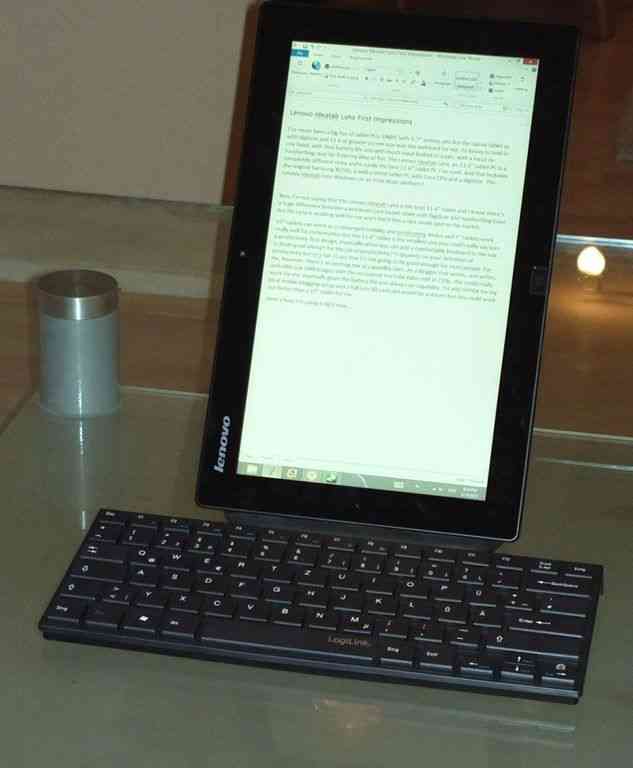 however, there’s an exciting mix of capability here. As a blogger that writes, and writes, and edits sub-2MB images with the occasional YouTube video edit in 720p, this could really work for me, especially given the battery life and always-on capability. I’d add HSPDA for my ideal mobile blogging setup and a full-size SD card slot would be a dream but this could work out better than a 10 inch Windows 8 device. I can think of a lot more customers that would get good value out of the Lynx too, not least the long-distance traveler; Having Windows behind the entertaining Metro/Modern/Win 8 Store is perfect for that scenario.
however, there’s an exciting mix of capability here. As a blogger that writes, and writes, and edits sub-2MB images with the occasional YouTube video edit in 720p, this could really work for me, especially given the battery life and always-on capability. I’d add HSPDA for my ideal mobile blogging setup and a full-size SD card slot would be a dream but this could work out better than a 10 inch Windows 8 device. I can think of a lot more customers that would get good value out of the Lynx too, not least the long-distance traveler; Having Windows behind the entertaining Metro/Modern/Win 8 Store is perfect for that scenario.
Here’s how I’m using it right now (see image) because I haven’t got the keyboard dock yet. That comes next week.
Here’s a rundown of the device itself.
Screen. Bright, not incredibly punchy in terms of color but is IPS which is a must on a tablet. 1366×768 is OK for me but I know that many would expect more. For reading, there would be an advantage with 1600×900 of course.
Build. Strong. No flex. No creaks. Plastic back feels a bit cheap. One thing I must point out is that the edges are not smoothly chamfered which could have given the use a more comfortable experience. If the Lynx was any heavier it would have been a serious negative point.
Ports/features: No rear cam. Micro ports could be a pain (usb, hdmi, sd on the tablet.) Speakers are loud, not brilliant quality. Dual-array mic. There’s a micro-USB to USB converter included and you can plug in a micro-USB charger which seems strange considering it’s a host port. Check out the unboxing video, below, for a closer look at the ports.
Software: Apart from a Norton package (removed immediately) and a Sugar Sync service (Acer cloud sync) it’s refreshingly free of additional software.
As for performance, you shouldn’t expect much difference between Clovertrail tablets due to the high level of integration inside – due to Connected Standby requirements. (Always on.) The Lenovo Ideatab Lynx does, however, beat the Acer W510 on PCMark7 purely because the eMMC write speeds are a little faster. On every other benchmark the two devices were almost exactly the same. The WiFi appears very slightly weaker on the Lynx which is a disappointment. It has the same Broadcom WiFi chipset as the Acer but I was hoping for better antenna design. In general the WiFi is relatively weak.
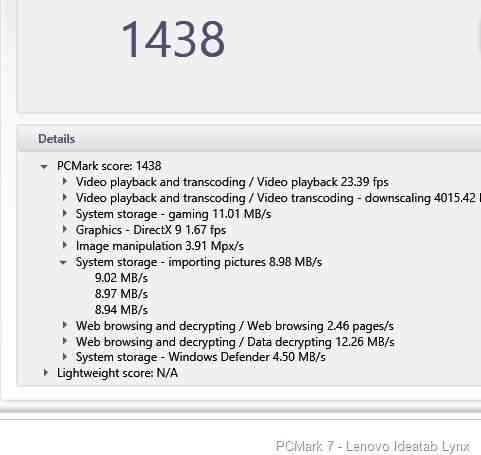
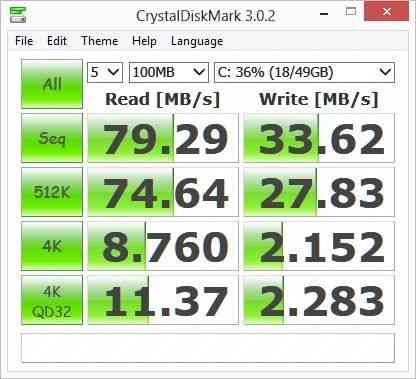
 All Clovertrail Windows 8 tablets are always-on capable but this one has a nice little trick because the micro USB port on the underside can be used to charge the device. This also serves as the docking port so clearly the dock will charge the tablet whenever it is connected a battery-to-battery charging setup that wastes quite a bit of energy. I’ve just connected in a pocket USB charger which can deliver 1000mA and the device is just managing to charge at a very very slow rate. I doubt it’s pulling the full 1A available. This is the first time I’ve ever charged a PC from a smartphone power pack. You can also see I’m using a Bluetooth keyboard. Total cost was about 55 Euro for the charger and keyboard. The Lenovo Lynx keyboard costs 155 Euro! One other advantage to this charging setup is the extremely small and light charger which delivers 5.2V up to 2000ma, similar to some tablet chargers. I love this idea of Micro-USB charging.
All Clovertrail Windows 8 tablets are always-on capable but this one has a nice little trick because the micro USB port on the underside can be used to charge the device. This also serves as the docking port so clearly the dock will charge the tablet whenever it is connected a battery-to-battery charging setup that wastes quite a bit of energy. I’ve just connected in a pocket USB charger which can deliver 1000mA and the device is just managing to charge at a very very slow rate. I doubt it’s pulling the full 1A available. This is the first time I’ve ever charged a PC from a smartphone power pack. You can also see I’m using a Bluetooth keyboard. Total cost was about 55 Euro for the charger and keyboard. The Lenovo Lynx keyboard costs 155 Euro! One other advantage to this charging setup is the extremely small and light charger which delivers 5.2V up to 2000ma, similar to some tablet chargers. I love this idea of Micro-USB charging.
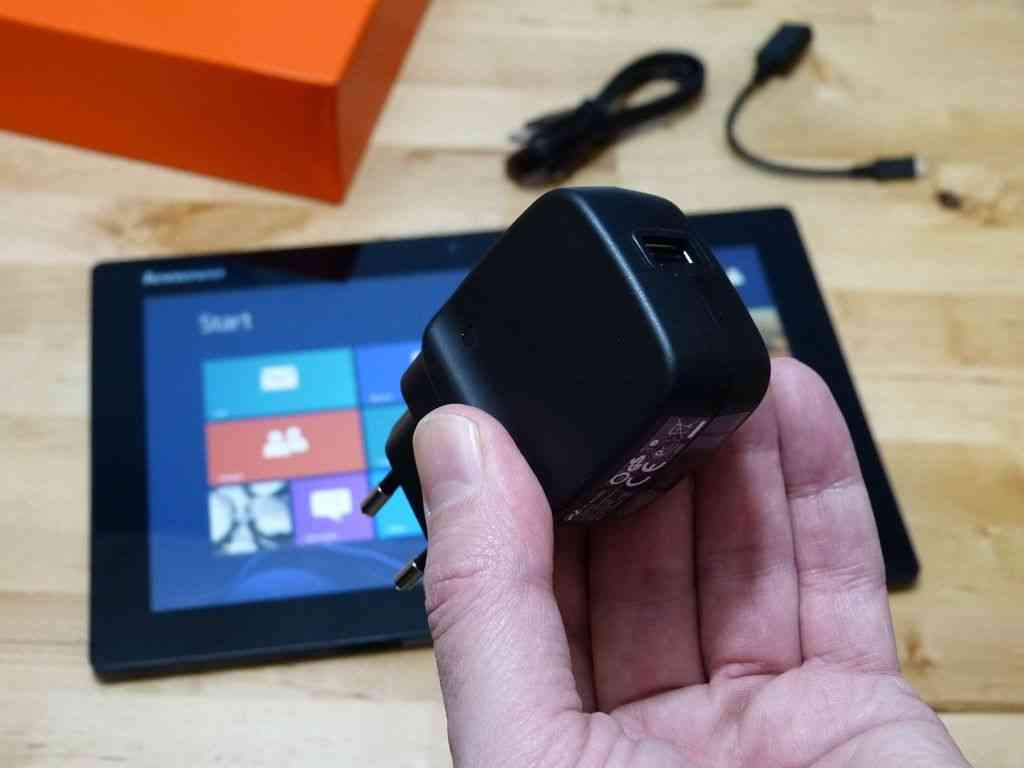
I’m not sure you’d need this charger during a full day out though because battery life is as good as I’ve seen on the Acer W510. I’m sitting here typing with WiFi on, Bluetooth on and screen-on in about 2.5W of usage enough for about 10 hours typing from the tablet battery alone. Based on what I’ve measured on Clovertrail before, you’ll struggle to get less than 6hrs battery life from the tablet. Video playback with WiFi off should run for over 10hrs if I have my maths right.
A quick word on Clovertrail performance now. It’s Atom, as we know it. It’s not a powerful compute platform but it returns a full and accurate web experience faster than most Android tablets. The graphics performance has been pumped up a little over previous generatios too; I was surprised how smooth a game of Reckless Racing was from the Windows 8 store. Audio playback and video playback hardware is included along with accelerated video encode. You’ll get about 2X the render performance that you saw on Netbooks which brings short 720p clips into scope at around 1X real-time rendering.
The SSD is not a SATA drive on any of the Clovertrail tablets as Clovertrail only supports eMMC which is usually soldered-on just as it is on Android tablets and the iPad speeds aren’t stellar but it’s acceptable, rugged, silent and efficient. 75MB max read, 33MB max write (sequential.) Oh, on noise there isn’t any. No fan here!
I’ll leave it there for now and hand-over to you for questions. The keyboard dock will arrive some time next week and I’m really looking forward to that because if the keyboard is typical Lenovo style, I’m going to get on very well with it!
The unboxing video and a few more pics are here.

Surface Pro Latest Details from The Verge + Chippy Analysis.
Posted on 10 January 2013
The Verge have just posted a very interesting and detailed hands-on with the Microsoft Surface Pro. I sent out my Surface Pro Performance Preview late last year but this hands-on, by Tom Warren, is worth taking a close look at too because it covers more than just the internals. You can read my thoughts below or just jump to The Verge.

A Peek Inside the Samsung ATIV Smart PC Pro + First Customer Feedback
Posted on 18 December 2012
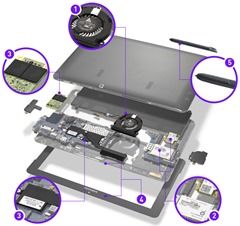 Competitor to the Microsoft Surface Pro (and 4 other Core-based dockables,) the Samsung ATIV Smart PC Pro / 700T / XE700 hasn’t exactly got the market to itself but given Samsung’s history of making tablets we think they have a good chance of being one of the most popular brands in the category and when Samsung posts details about what’s going inside the SmartPC Pro you get the impression they have some confidence too.
Competitor to the Microsoft Surface Pro (and 4 other Core-based dockables,) the Samsung ATIV Smart PC Pro / 700T / XE700 hasn’t exactly got the market to itself but given Samsung’s history of making tablets we think they have a good chance of being one of the most popular brands in the category and when Samsung posts details about what’s going inside the SmartPC Pro you get the impression they have some confidence too.
Check out some of the key features inside the Samsung ATIV SmartPC Pro below and read-on for information on the first owner-feedback.

Acer W700 Win8 Core Tablet – First Reviews Are In
Posted on 13 December 2012
Although there are a number of slider and rotating screen Ultrabooks out there it’s the dockable slates that seem to interest the readers here the most. The Samsung XE700 / Smart PC Pro is available in a number of location now but it’s the Acer Iconia W700 that get’s the first round of reviews. Laptop Magazine and CNet have published their thoughts so make sure you read these to get a feel for weight, battery life, performance and features for this new phase of Window Tablet PCs.
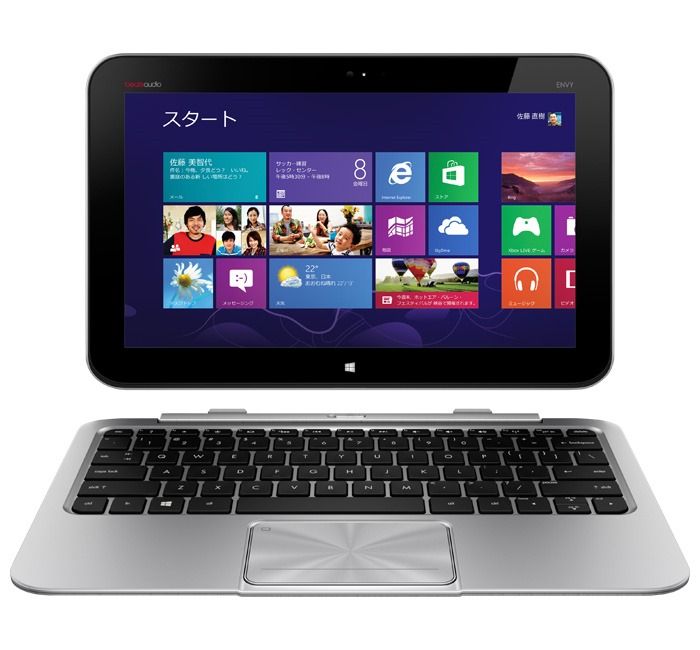
HP Envy X2 CloverTrail Tablet Shipping Late December
Posted on 13 December 2012
According to a couple of online source the HP Envy X2 should start shipping soon. An offer starting in Japan today promises delivery starting from the 27th December (some reports say 21st) and in Germany a couple of retailers have listed the same timeframe.

10W Ivy Bridge Processors for 2013 Could Explain Surface Pro Launch Timeframe
Posted on 09 December 2012
Intel could, according to Xbitlabs, release a new set of low-TDP Ivy Bridge CPUs next year that will help tablet and Ultrabook designers make products thinner, cooler and quieter. TDPs will be brought down from 17W to 10W by limiting clockrate and Turbo features. The process is going to make it very difficult for a customer (and for us analysts) to determine performance based on a i3/i5/i7 part number but are also likely to be there to let Intel feed-in lower price CPUs for tablets and low-cost Ultrabooks. There’s a little trickery involved here as designers already have options for locking-down TDPs although the new parts extend that capability down to tablet designs and make it simpler for manufacturers. The new parts seem good candidates for the Surface Pro for which we don’t have a Core i5 model number yet.
Base frequencies and Turbo features are changed in all of the new CPUs. We don’t expect any changes to the Core architecture.
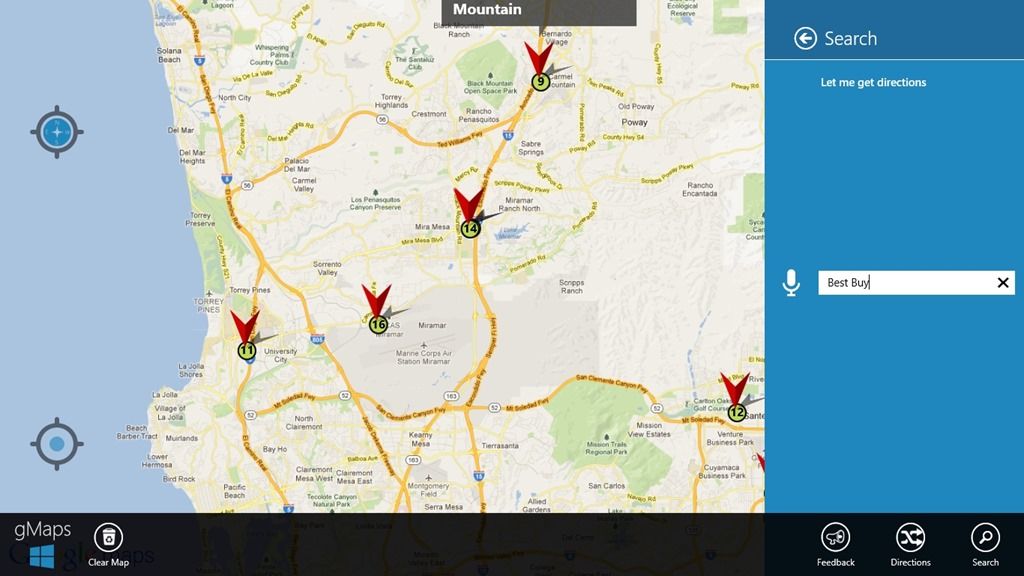
Maps and Navigation with the Samsung ATIV SmartPC 500T (Windows 8, CloverTrail)
Posted on 26 November 2012
Hector, a guest poster and CloverTrail Windows 8 tablet owner has another post for us today. He’s been looking at navigation applications in Windows 8 on his Samsung ATIV SmartPC 500T. Don’t forget to subscribe to Hectors YouTube channel here. Follow him on Twitter here and check out his blog here. Thanks Hector!
 |
| |||
 |
| |||
 |
| |||
 |
| |||
 |
| |||
 |
| |||
 |
| |||
 |
| |||
 |
| |||
 |
|

